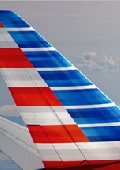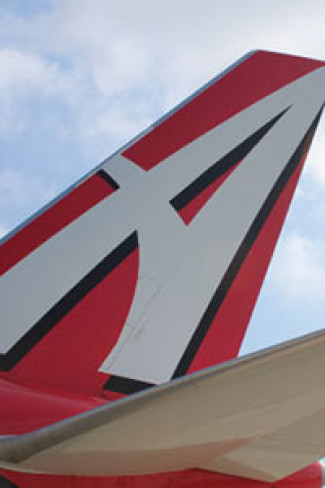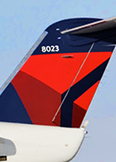Surviving the Simulator
Keeping a good attitude and remembering a few key elements in this stage of your training will hopefully lead to an uneventful and successful check ride.
Preparation is key
In my experience as a simulator instructor, those candidates who've come prepared for the experience have few, if any, issues throughout their training. It's common to get a bit nervous but once you realize that your career will boil down to checkride after checkride, you learn how to play the game.
Those that haven't prepared frequently have trouble right from the beginning. When people have trouble, instructors make notes. These notes may become part of your training record depending on the type of operation you're employed by.
So let's face it: though cheaper than using the actual aircraft, simulator training isn't cheap. It still costs money and when you cost your company money, the end result isn't as nice as we'd like. So take some steps to prepare yourself.
If this is a new aircraft to you, take it for what it is: new. While correlation helps, nobody cares what you could do with the last aircraft, what it did better, when you could do this or that, etc. We DO care about what you do with this one. Don't let the last aircraft get in the way of the one you're going to be evaluated on.
Many formal aircraft training programs have a segment that tells us how we're going to operate the aircraft. What are the normal procedures? How do we power up the aircraft? What types of safety checks must we do? Are there any first flight checks? This is the meat of how you run the aircraft.
How exactly are check lists handled? Do we perform a flow (a pattern of actions performed at a certain time) and then run the checklist to verify the actions? Do we use the checklist as a do list executing things as they're read from the checklist? Let's assume, for this article, that we use a flow and verify with the checklist.
Later we learn about standard call outs and when we can perform normal checklists. This isimportant: know exactly what you need to run a particular checklist. If you ask for a descent checklist, will you have to stop thechecklist because something that was on the checklist wasn't done? Many operators require the restarting of a checklist if there's been any interruption. In some cases, you won't be able to perform a checklist because you don't know how muchthe aircraft weighs.
Also know where you can run a checklist. Because of the increased vigilance during operations on the ground, many operators will not perform a check list while in critical areas say, while crossing a runway, or maneuvering in a crowded gate or ramp area.
In the event of anabnormal or emergency situation you need to know exactly when you can perform the related checklists. In some cases operators will have aminimum altitude in which to accomplish the appropriate checklist(s). In other cases there are memory items that have to be performed. Know which situation demands the appropriate action. Most importantly with the exception of memory items--do not do anything that is not in the appropriate checklist!
When you are new to an aircraft it seems as if you can't find what you are looking for. The use of a Cockpit Procedures Trainer (CPT) or even a cockpit graphic poster can prove beneficial and save a lot of time in the simulator. There honestly isn't enough time to let you spend 45 minutes to one hour in the simulator just trying to get the aircraft powered up and to the runway. Perhaps on day one, but on day two there's too much to do. Using the CPT and pairing with a partner will help you review the tasks that need to be accomplished to help you in the simulator and the actual aircraft. Always refer to the appropriate Pilots Operating Handbook or Aircraft Operating Manual for the proper procedures.
And while you're there with your fellow aviator, role play. Practice executing the normal checklists and the responses. Learning the responses will help, but making sure you have done the items asked is the goal.With repetition the responses will become more natural. Do a Before Start checklist, talk through the start sequence of the engine, perform the after start flow and then respond to the appropriate checklist. Call this chair flying or hangar flying or whatever you want, it works. And it will help you in the simulator.
It's a simulator, but keep it real
While simulator visual sand technology is improving there's no substitute for the actual traffic or environment that we operate in the real world. Okay, so there was no traffic when you left the gate. Did you look? Are you required to verbally clear the area on your side of the aircraft? I've done training with numerous crews that when cleared into position for a given runway in the simulator never looked down the final to see if it was clear. The virtual aircraft that I was able to put on final approach would have collided with their aircraft had this been the real world. Runway incursion training is a hot topic and the simulator is another venue where that training is performed.
Where is your taxi chart? Is it out while you're taxiing to a runway? If the runway visual range (RVR) is reported as 1200 or less, are you using the appropriate taxi chart? If performing a takeoff with lower than standard minimums, do you have the necessary runway equipment operating (operating is important numerous pilots have been duped into commencing a low visibility takeoff with the instructor removing the center line lights)?
Think about the location being simulated: class B airspace? Class C or D? If required, do you have the minimums for takeoff for the assigned runway? Do you require a takeoff alternate? What airspeed will you accelerate to after takeoff? Are you required to give a takeoff briefing? What will it include? Treat this as a real airplane and training will be much easier.
Your job as pilot of this aircraft is to complete the normal, abnormal, and emergency checklists at the appropriate time while moving the aircraft from point to point which in the simulator is often back to point. Call for the checklists at the appropriate times. Things move quicker in the simulator because we don't have the time to go from. When it is evident that you'll be getting out of the climb or cruise phases of flight, start thinking aboutwhat you need for an arrival. You need the weather. Have your pilot monitoring (formerly known as the , or Pilot Not Flying) get the weather. Have your PMcompute the appropriate landing speeds. Have your PM start settingup for the approach. If your aircraft has a flight attendant, haveyou notified them? If your aircraft is Flight Management System(FMS) equipped, have the PM set that up for you. Then run theappropriate checklist(s).
Keep it Textbook
Study the profilesprovided by your company's training department or provided toyou by the company you've contracted with to provide training.Don't stray from these profiles. While many times we canoperate the aircraft safely at higher speeds and in a moreexpeditious manner, we're striving to complete this maneuver toa prescribed standard.
Know theprofiles for takeoff, climb, airwork (steep turns, stall series),descent, and precision and non-precision approaches. Knowwhat configuration you'll need to be in when having to executea full procedure approach with course reversal. Know when toextend the landing gear and flaps. If your aircraft is automated,know when to turn off the automation or when to select theappropriate modes. Know what the next altitude is or have your PM tell you. Then use the prescribed methods of executingthose tasks. If you have to verbalize what you want to do, thendo it!
It's known and,in many cases, common practice in the real world to do much fasterairspeeds until the final approach fix. Unfortunately, the simulator world doesn't operate that way. There's no one behind you fly the profile.
Handlingabnormalities and emergencies
The aircraft I mostrecently instructed on has a crew alerting system that could generatewell in excess of 300 different emergency, abnormal, and advisorymessages. The emergency and abnormal messages would also set off amaster warning and caution, respectively.
How does your companyhandle abnormalities and emergencies? Most likely it will be withthe PM being told to identify and cancel, meaning Identify the problem and cancel the warning/caution. Find out how this works and what is expected. And then ask for thePM to execute the associated checklist. Some of the airlines I've worked with in the past have stipulated that these checklists are tobe executed above a minimum altitude. The only exceptions I canthink of are possibly an engine fire after takeoff and a jammed flight control both situations had memory items that needed tobe executed.
Remember, keep it real: if you have an aircraft with a flight attendant(s), keep them advised. Would you need to declare an emergency with ATC for this given condition? In many cases the answer is yes. Your simulator instructor will be glad to give your aircraft priority. If you find your simulator instructor telling you that you are number ten for the approach, consider that a hint.
Another situation to consider is the emergency or abnormality inside the final approachfix. Some situations make the choice easy: go around and handle thesituation in the air. Others might lead the PF to continue andhandle the situation on the ground. One way or the other it leads to.
Have a plan
Alright, the engine didcatch fire inside the final approach fix. What now? You're fully configured, on final approach speed, and two miles from therunway. You could go around and handle the situation in the air oryou could continue, hopefully see the ground above minimums, andland. Whatever your choice, make the decision, formulate yourplan, and tell your PM what you're going to do and what youexpect of them. Not having a plan generally leads to less than desirable performance. Additionally, you can avoid confusion in the cockpit by telling your PM what you are going to do. Can you imagine a situation where the PM thinks you'll be going around and you keep flying towards minimums?
Help is one seataway
If this is your first aircraft that requires more than one pilot, it will take some getting used to having the other person there. Get used to it embrace the idea! As a matter of fact, the PM will be busier usually FAR busier than you ever will be in the training and checking environment.
Use your PM as an assistant. Ask them for the normal checklist. Ask them for the abnormal or emergency checklist. All you have to do is know when it's appropriate to do so. Ask them to obtain the weather, or compute speeds, or load the FMS. This is YOUR checkride, get the help that you need.
Conversely, asking the PM to run the engine failure checklist, then give me an after takeoff, followed by a cruise check, descent check, and then the One Engine Inoperative procedures, and declare the emergency with ATC would be a little much. Pacing your PM is an art.Different people will work at a different pace. If your simulator partner is as new to the aircraft as you are, you might find they're quickly overloaded as this is as new to them as it is to you. Two tasks at a time is probably sufficient. If needed, you could always ask Where are we with the checklists? This will give you an idea of their progress. Either way, you need to communicate with the PM while you fly the aircraft.
Outside the cockpit, you have a F/A (or more), ATC, and the Company all portrayed by the Simulator Instructor. Use good Crew Resource Management and get all parties that can be helpful to you involved in the situation.
Lastly, don't get rushed. If ATC is trying to hurry you into an approach, don't accept the approach until you're ready. That means all the appropriate checklists have been completed. Use your airman's authority to handle the situation and don't let ATC push you into a situation that you shouldn't be in.
The Checkride
You've demonstrated to your instructor with consistency that you're proficient to take the checkride. A good instructor will have you over prepared. The checkride itself will feel like a non-event and will have you feeling like you should be busier. Keep reminding yourself that you have to execute a certain number of checklists at the appropriate time. Scan the instruments. Scan the annunciator panel or crew alerting system. Scan the engine gauges and instruments. Observe all the limitations. You can fly an excellent checkride but exceed one limitation and it is too easy for a checkairman to issue a Notice of Disapproval.
Don't do anything that you haven't already done in training. Now is NOT the time to get creative. It can probably be said with a high degree of certainty that check airmen don't fail pilots, pilots fail themselves. Don't try to second guess the check airman or figure them out. Abnormalities or emergencies that they want to happen will present themselves clearly. Handle the situation just like you did in training. Don't do anything you haven't done already.
Summary
Simulator training doesn't have to be difficult. With the proper preparation, study, and a bit of CRM getting to the end result flying the actual airplane is just a few simulator sessions away.
-

Piedmont Airlines 10/16/2024
-

ABX Air 10/11/2024
-

Allegiant Air 09/25/2024
-

Premier Private Jets 09/25/2024
-

Endeavor Air 09/25/2024
 AIRLINE PILOT CENTRAL
AIRLINE PILOT CENTRAL